Austrian Brudas Brak Dog Breed – Facts and Information
The Austrian Brudaste Brak is a coarse-coated, unpretentious-looking hound bred for hunting wild boar.
Country of origin: Austria
Size: medium
Height: 45-53 cm
Weight: 15-24 kg
Age: 12-14 years
FCI breed group: hounds and related breeds
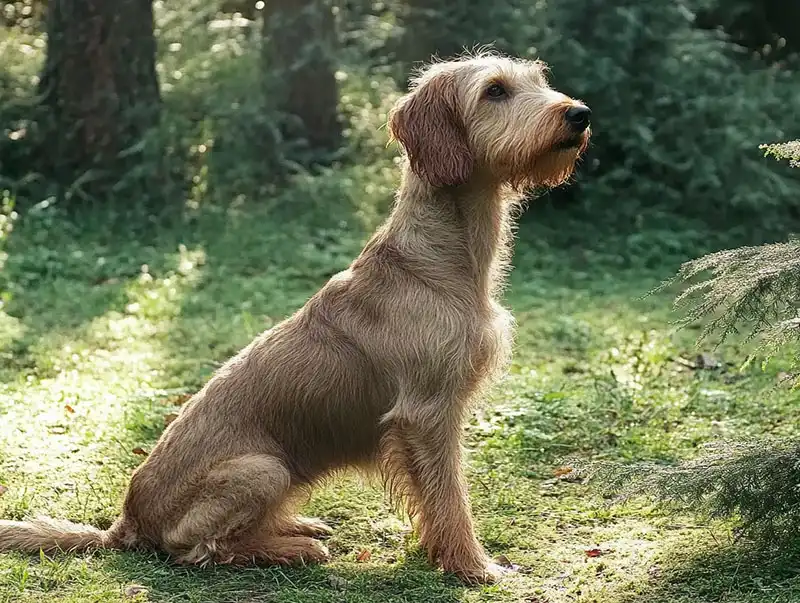
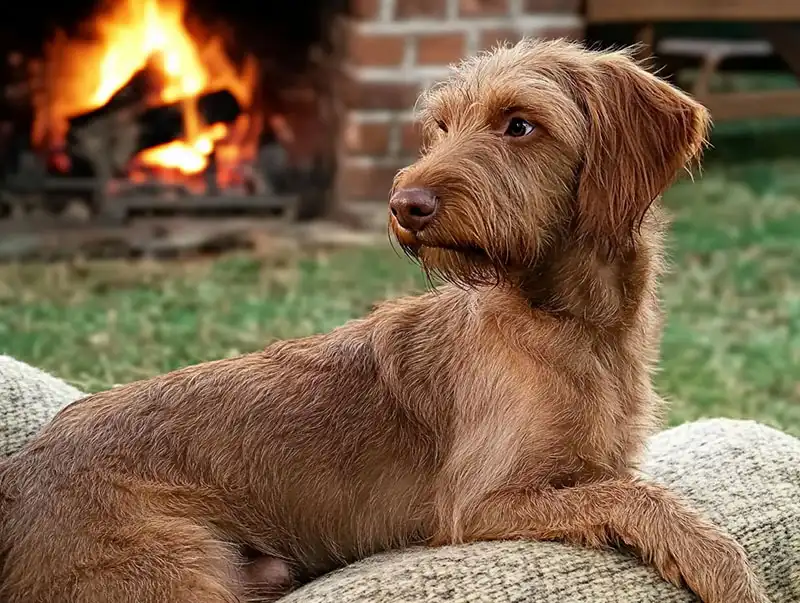
Basic facts about the Austrian Brudast Brak
Steirische Rauhhaarbracke is the official German name of this breed, adopted in its native Austria. When translating the standard into English, and then into Russian, it was changed to Styrian Coarse-haired Hound, and this is the name it appears under in most documents.
The variant “Austrian Brudast Bracke” is unofficial, but the most well-known and used in everyday life. Sometimes such dogs are also called Styrian bloodhounds or Painting Brackes in honor of their creator Karl Painting.
The word “brudast” refers to the shaggy hair on the animal’s face, and should not be confused with “fly-headed”, which refers to drooping cheeks or lips. Bracke is a general term for European scenthounds in German, similar to the English word “Hound”. Styria is the region in southeastern Austria where the breed originated.
The purpose of creating the Austrian Brudast Brak was to hunt wild boar and deer. Peintinger wanted to obtain a dog that could make its way through the most difficult terrain, that was hardy, unpretentious and had an unpretentious appearance, which would not require constant grooming.
Styrian Braques are small in number, the majority of the population lives in Austria, some are in Germany, Slovenia and other countries. Their breeding is strictly controlled by a number of organizations and is carried out according to a pre-arranged plan, only individuals with excellent exterior and high working qualities can be involved in it. According to clubs, a little more than 100 puppies are born annually, they are sold exclusively to hunters.
History of the breed’s origin
The Austrian Brudast Brakke is considered to have appeared in the 1870s. They were bred by an industrialist from the province of Styria, Karl Peintinger, after whom they received one of their names. The first of the founders of these bloodhounds is considered to be a female Hanoverian Brakke named Hella, crossed with Istrian wire-haired hounds and Brandl-Bracke . Selection work continued until hardy hunting dogs with a rough appearance, capable of pursuing large game in any conditions, were obtained.
In 1890, the Austrian Brudast Braques were recognized as an independent breed in Austria, after which they were bred in pure lines, but at the beginning of the 20th century, Breton Griffons were added to the pedigree in order to improve some qualities.The first standard was created in 1888, based on 26 animals that belonged to Peintinger personally and were considered exemplary.
The Austrian Styrian hounds survived the First World War only thanks to the famous breeder Otto Biloff, the Second World War affected them slightly less. The Styrian hounds won FCI recognition in 1954. Subsequently, they were registered by most of the world’s major cynological associations, but not all of them, for example, they are not listed by the AKC.
Currently, Austrian brudast brakki are considered extremely rare, they are bred in Austria and Germany by several kennels, and are kept mainly by hunters, as pets such dogs are practically unknown. Working tests and further improvement of the breed are supervised by clubs Österreichischer Verein Brack and Deutscher Brackenverein eV. In Russia, Styrian bloodhounds have not been noted to date, and there is no talk of breeding activities.
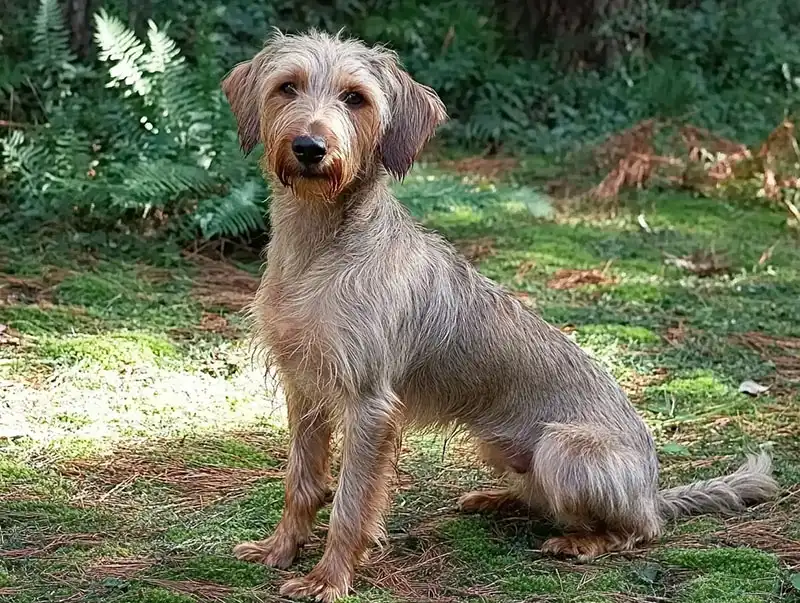
Description of the Austrian Brudast Brak
The dog is of medium size and has a strong, harmonious build, its exterior is far from aristocratic, the hard coat gives the animal a rustic, simple look – this was originally intended when the breed was being developed. Appearance plays a secondary role, first of all, breeders evaluate working qualities, so the authors of the description were extremely laconic and many of its points are indicated by a couple of words, we tried to convey them as accurately as possible, but a little more detailed.
The current version of the FCI standard was updated in June 1996, since then no additions have been made to it.
Head
Quite impressive, lightness is indicated as a fault. The skull is rounded, with a pronounced occipital protuberance and a clear transition from the forehead to the muzzle, powerful and straight. The nose is always exceptionally black, the lips are not pendulous, the jaws are strong. A complete scissor bite includes 42 teeth, the absence of a pair of small molars is permissible, but not more than that.
Eyes
The description does not indicate the exact parameters of this part of the body, since the cut and depth of the planting are of no importance for work. They are only brown in color; Styrian hounds have not inherited other options from their ancestors. In general, they are harmonious in relation to the facial area.
Ears
Not too large, hanging flat almost from the very base, covered with fine, hard hair, not short, but not excessively rich, smaller than on the body. Should not be erect, twisted or pointed.
Neck
Moderate height, strong, with a good muscular frame. Not elongated, not thin, not stocky, without excessive massiveness, proportionate in all respects, with a firm fit on the shoulders, without folds of skin, but with a small collar.
Frame
Rectangular format, with a smooth, wide topline. The back is straight, with a slightly convex loin and a sloping croup. The chest is voluminous and deep, giving room for the heart and lungs and the ability to take a good breath.
Tail
Average in parameters, thicker at the root than at the tip, excessively thin is extremely undesirable. Densely pubescent, the bottom of the pile resembles bristles, a pronounced featherdoes not form. It never curls into a ring, but is bent into a sickle, although without excessive steepness.
Limbs
Very strong. From the front and rear angles they look straight, when viewed from the side, the correct angles of the joints and developed muscles are clearly visible. The shoulder blades are well sloping. The paws are high-arched, tightly gathered, not particularly large, with hard pads.
Movements
All gaits remain free, flexible and light. Sufficient reach and thrust of the legs are provided by their structure. Stiffness, overlapping, shaking, lethargy and other defects of gait are unacceptable. The Austrian Brudas Braque develops a decent speed, and is able to maintain it in conditions of difficult relief and rough terrain.
Coat
Not shaggy, but rough, somewhat broken, not smooth and without any shine. Excessively fine, curly or soft in texture is considered a deviation from the breed requirements. On the head, the hair is noticeably shorter than on the rest of the body, forming a small mustache and beard. Gives the dog a disheveled, unkempt appearance.
Breed color
Only two variants are acceptable – completely red of varying degrees of saturation, and equally uniform fawn. A white spot on the chest is not considered a fault, but there cannot be the slightest marks on other areas. All colors, except those indicated, are considered a deviation from the standard.
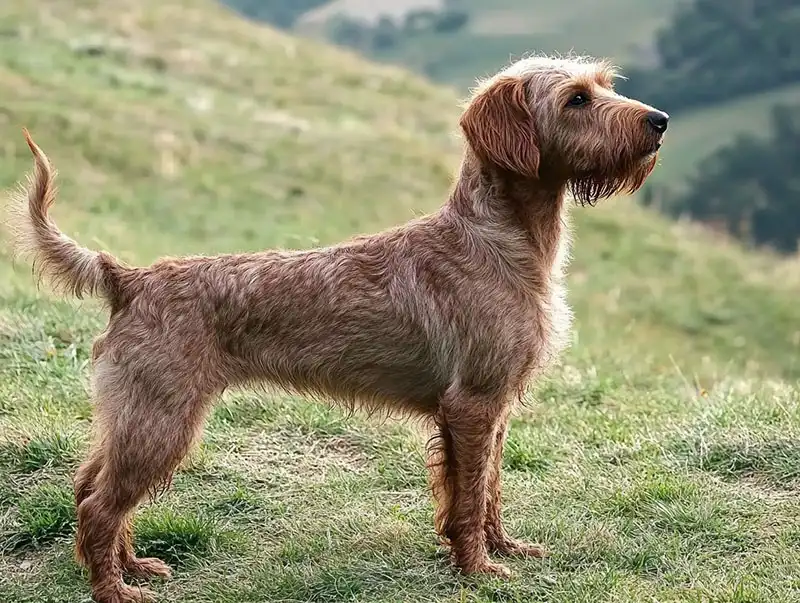
Size
Adult males reach 45-53 cm at the withers, females grow up to 45-51 cm. No deviations from these parameters are allowed. The average weight fluctuates between 15 and 24 kg, corresponds to the proportions and build, but is not strictly prescribed.
Character of the Austrian Brudast Brak
These dogs have always been used for hunting and are best known for their outstanding working qualities. They are hard-working, persistent, extremely patient, but when they get on the trail, they demonstrate a rare passion and desire to pursue. The whole process is accompanied by loud barking. They have the ability to navigate perfectly in the terrain, including unfamiliar and difficult ones.
Austrian Brudaste Braques are not considered good family pets.
They are peaceful towards their household members, but not very sociable, they are not at all inclined to play endlessly with anyone, and children’s pranks often irritate them. These bloodhounds are completely subordinate to only one person and are not capable of changing their owner. In general, they are quite friendly and obedient, but they do not show any interest in the vast majority of people.
They are not highly dominant and are rarely stubborn, but they are very independent, and without proper upbringing they ignore orders, believing that they themselves know perfectly well how to act best. From childhood, they need to be taught good manners and an understanding that the leading position is occupied by a person.
Of all the animals, Austrian brudast brakki are good only to dogs regardless of breed (but they may not accept small ones). All the others provoke them to show working qualities. Even joint education does not give a full guarantee that the Styrian will not chase and scare your cat at every opportunity. Most owners have them together with other dogs, such an environment is the norm for the Austrian brudast brak both at home and on the hunt, although alone he copes with his duties just as confidently.
Good guards, loyal, suspicious of strangers, ready to come to the rescue without delay and protect the owner, his family and property at any cost. Endowed with high intelligence.
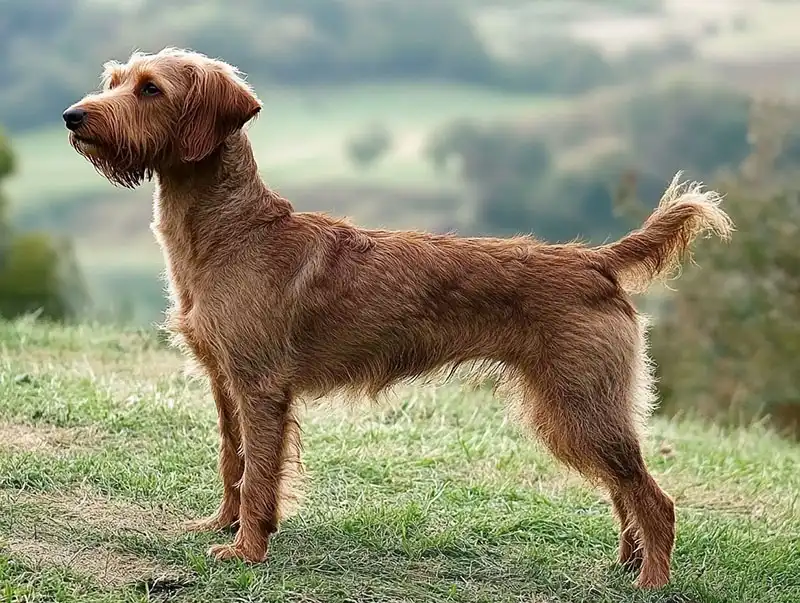
Training and education
Representatives of this breed are trained well, they are smart and quick-witted, but require a firm, consistent approach and experience due to their independent nature and strong will. A beginner will find it quite difficult to teach a Styrian hound anything, this is a pet for professionals and dog breeders with solid experience.
In any case, you can take an obedience course with your pet under the guidance of a dog trainer. Without strict discipline, Austrian Brudas Braques grow up willful and ignore the owner’s orders. During classes, it is important to maintain a positive attitude and encourage the animal’s achievements with praise and treats.
These bloodhounds need to be socialized carefully and systematically; they are quite indifferent to people and do not show hostility without a serious reason, but they have a very strong hunting instinct, which they enthusiastically demonstrate towards any animal they meet on their way, unless it is a dog, of course.
Unwanted actions are stopped immediately, delay is fraught with the fact that the baby will not understand what caused the owner’s displeasure, and will begin to repeat them, forming a habit. It is also necessary to introduce him to different environments, noisy crowded places, allow contact with strangers. As for behavior at home, the puppy needs to communicate with all household members regularly and receive positive emotions from this, otherwise he will subsequently treat them coldly and without due affection.
Austrian Brudaste Braques are traditionally used only as hunting dogs , and this is the type of activity they are trained for from an early age, but if necessary they are able to participate in sports competitions that are somehow connected with tracking and chasing bait. Recently, the dogs have been appearing in competitions more and more often.
Maintenance and care of a dog
Most breed experts do not recommend keeping an Austrian Brudaste Braque in the city, but it can adapt to such conditions if the walks are active and long.
An active pet requires space, long walks, and outdoor sports. He is not ready to peacefully doze on a bed, having thrown out energy on a run, as he is very active and tries to constantly be busy with something. In the Russian climate, keeping him in an enclosure or in the yard is permissible only in the warm season, where the best solution would be an insulated kennel or living space. Clothes are unlikely to be needed in winter, but the Austrian Brudas Brak is not capable of staying outside in the cold for too long, and especially spending the night in such conditions.
The condition of the fur must be carefully monitored; in the forest, a shaggy, determined hunter picks up a lot of thorns, dry twigs and other debris, which the fur is cleaned of. Falling hairs are removed with slicker brushes or brushes with hard bristles, this should be done once a week.
Unless, of course, there is serious dirt that cannot be removed with a damp towel. Before the exhibition, pets need more thorough care, but tousledness is their natural state, haircuts and grooming salon services are not required for this breed. Whiskers and beard are wiped after each meal, since pieces of food get stuck in them.
Austrian Brudas Braques have their ears examined weekly, they are cleaned regularly, using a disinfectant lotion, as they are prone to inflammatory processes. The corners of the eyes are wiped, and the teeth are treated with veterinary pastes. These dogs wear their claws on the ground themselves with sufficient physical activity, but it still does not hurt to control the length; if necessary, they can be shortened with nippers or a special machine.
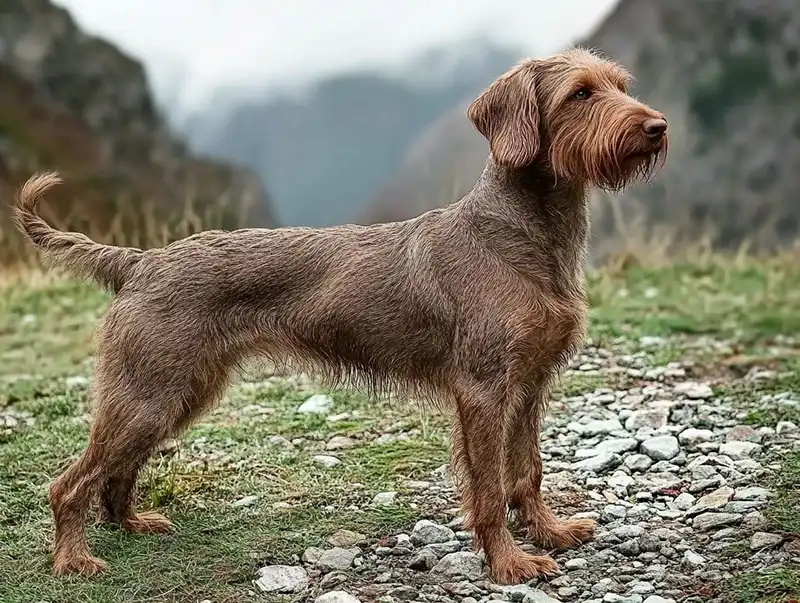
How and what to feed your pet
Austrian broodmare are unpretentious in matters of nutrition, but for the health and well-being of even such hardy pets it is important to stick to a balanced diet, buy only fresh and high-quality products and follow basic rules.
Adult Styrian bloodhounds are recommended to be fed twice a day with a constant regimen, but during periods of long hunting trips they are capable of eating once a day for some time. This should not be abused, as this approach seriously harms the dog’s digestion. Also, avoid giving food before walks, as this often leads to increased gas formation, bloating and volvulus.. Always keep drinking water readily available.
According to veterinarians, the most useful for pets are ready-made high-quality feeds that take into account the needs of four-legged animals and are well absorbed due to special processing of the components. The packaging of such products must indicate all the recommendations, namely: for what age is this or that product suitable, for a large or small breed is it intended, whether it is permissible for certain diseases, etc. This makes it easier to find the best option that meets the current needs of your pet.
A home-cooked diet is also suitable for Austrian broodstock. But in this case, to correctly select a daily menu, you need a thorough knowledge of veterinary dietetics, so you need to contact a specialist – when feeding yourself, you can make mistakes that are fraught with undesirable consequences for the pet’s well-being.
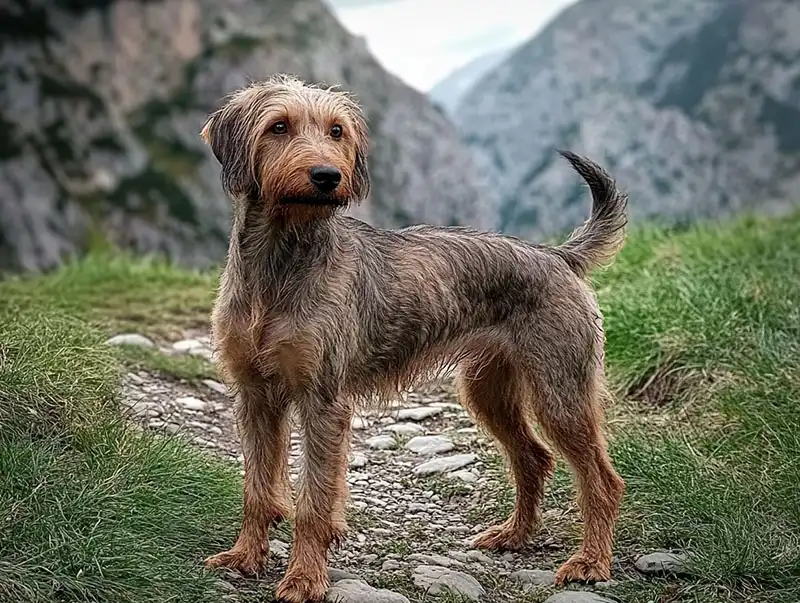
Health issues
In general, this is a hardy dog and not susceptible to many diseases. The reason is strict control over breeding, testing of breeding individuals and the fact that only the strongest and healthiest animals were selected to create the breed. However, they sometimes encounter individual problems that potential owners should be aware of.
Most often, Austrian Brudast Braques suffer from joint dysplasia; there is not a single breed in the world that does not suffer from it at least occasionally. It is a pathology in which tissues are formed incorrectly in childhood, or are destroyed and changed. In a healthy animal, the head and socket of the joint fit tightly together, ensuring easy and free movement. In sick animals, they do not match, leaving a gap between them, which causes further deformation and complications. This anomaly is often transmitted genetically, but in Austrian Brudast Braques it is acquired due to an unbalanced diet and excessive loads at an early age.
Otitisand infectious inflammations of the hearing organs are especially common in breeds with hanging ears, it is important that they remain clean and dry, otherwise a favorable environment for fungi and bacteria is created inside.
Bloating is the most severe form of gas formation in the intestines, it requires urgent veterinary help, otherwise the pet may die. In milder cases, it is a relatively harmless indigestion that causes discomfort, but is not life-threatening. The main reason is feeding errors – inappropriate, low-quality products, eating before an active walk, etc., but there may be others, such as stress, worms or inflammatory processes.
Eye diseases are usually observed in older individuals. For example, cataracts develop over the years – clouding of the lens, which causes vision to decline, without treatment it often leads to blindness, so it is better to undergo an examination by an ophthalmologist regularly.
Sometimes, Styrian wirehaired hounds have cancerous tumors. The possibility of other diseases cannot be completely ruled out, so if suspicious symptoms (diarrhea, vomiting, fever, apathy, etc.) are present, you should contact a veterinary clinic. It is recommended to have a preventive examination by a specialist at least twice a year. Also, do not forget to vaccinate your pet in a timely manner and treat it for external and internal parasites.
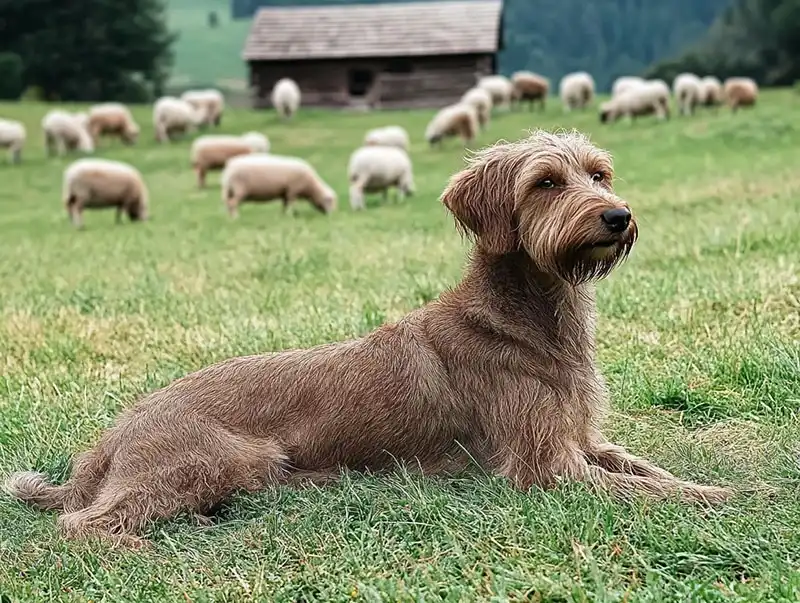
Who is this dog for?
In the vast majority of cases, dogs are kept exclusively by hunters, and the breed clubs of Austria and Germany also insist on using them for their intended purpose. Given their character, this point of view should be recognized as correct, but in some cases, Styrians turn out to be good companions for some other categories of people.
Here are some important things to consider when considering getting a puppy:
First of all, Austrian Brudast Braques are hunting assistants, who can perfectly navigate any terrain and work in the most difficult conditions. For this, they are valued and bred in their homeland, trying not to pass them on to anyone except professionals who use their pets to hunt game.
They are capable of becoming high-class athletes with proper training and constant training, the preferred disciplines are those related to pursuing bait or searching by smell.
Austrian brudaste brakki cannot be called the best choice for a family, Styrian hounds are friendly to people, but without much enthusiasm, they do not strive to play with children, except perhaps with teenagers, and if there are no pets in the house, besides dogs, then they can quite get used to it and become good four-legged friends.
- They feel more comfortable in the village; experts do not consider keeping them in the city to be a particularly good solution, but with good training and socialization it is possible.
- They need regular walks due to their high activity level; those who prefer a quiet lifestyle should consider other options.
- They are not suitable for beginner dog owners, as they require firmness and certain training skills.
What to look for when choosing a pet
In Austris and the vast majority of other countries, Austrian Brudast Braques are not bred, and the number of existing individuals can be easily counted on the fingers of one hand. To purchase a dog of this breed, you must contact the kennels and breeders of Austria and Germany directly.
The breeding conditions for Styrian hounds are strict, prospective parents undergo a rigorous selection both for appearance, participating in exhibitions, and for working qualities, passing at least one hunting test, but most breeding animals have the results of several such tests. This approach allows for the production of high-quality livestock, although not so numerous that the breed would quickly spread.
The future owner does not have to worry about the pet being not good enough for the ring or work, being kept in poor conditions, but should be wary of sellers who cannot confirm the origin of the puppies with the appropriate documents. It should be noted that the risk of running into a fraudster is small, but it still cannot be completely ruled out.
The breeder may ask for what purpose you are acquiring the baby, how you plan to raise it, whether you are going to engage in breeding activities, etc. If the answers seem unsatisfactory, then the likelihood that you will be refused increases, since fans of these bloodhounds are very sensitive to their four-legged friends and are worried about their future. Most clubs and nurseries transfer puppies exclusively to hunters, not welcoming their keeping as pets.
Keep in mind that the Austrian Brudast Brak is rare, very few litters are born, so you will have to sign up for a waiting list and wait patiently. Use this period to prepare your home for the arrival of a new inhabitant, learn more about how to care for it, discuss with the breeder assistance in transporting it across the border or a courier who is ready to handle the delivery if you are unable to come in person.
What do the owners of these dogs say?
There are currently no representatives of this breed in our country, so we turned to the experience of foreign lovers and collected the few comments they left. You shouldn’t be surprised by their modest number and brevity – these are very rare dogs, familiar only to connoisseurs and specialists.
Here’s what they think:
- Austrian broodmare looks stern, and this impression is not at all deceptive, these are strict animals that require firmness and confidence from their owner.
- A working breed in its own right, it is hard to imagine it as a pet or companion for your children, it cannot be called playful, a child’s pranks can irritate the Styrian Brak, as can excessive friendliness, although it is rather peaceful and calm than aloof.
- Hardy, hardworking, they do not require any special care or specific diet.
How much do austrian brudast brak puppies cost
The approximate price of a Styrian hound in Austria varies between 1200-1500 euros, if the baby does not have any minor flaws in appearance. Such limits are recommended by the clubs that curate this breed. In some cases, breeders determine the cost themselves, but most of them listen to the opinion of specialists.
Cheaper puppies are rare and, as a rule, have some deviations from the standard, small, but not giving the right to claim titles and participate in breeding. Working qualities affect the price tag almost to a greater extent than, directly, the pedigree and exterior, since the Austrian Brudast Brak remains a purely hunting dog. Transportation costs are calculated separately, based on the distance and type of transport.

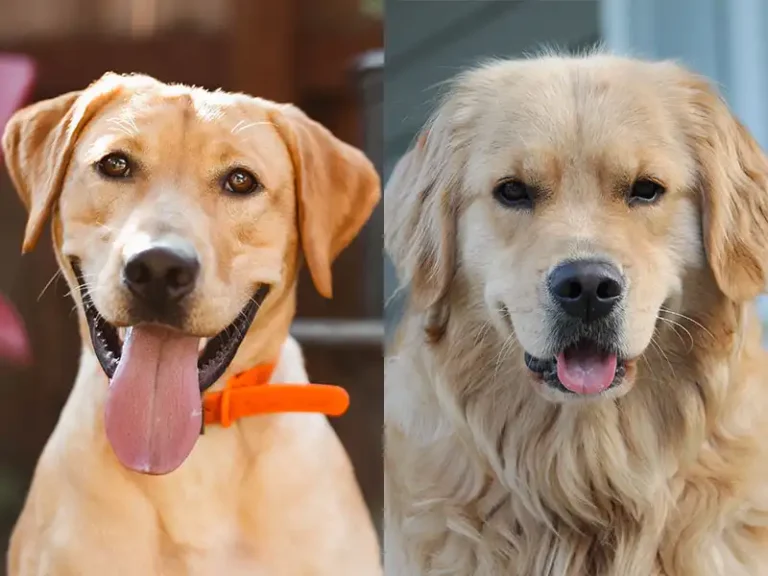
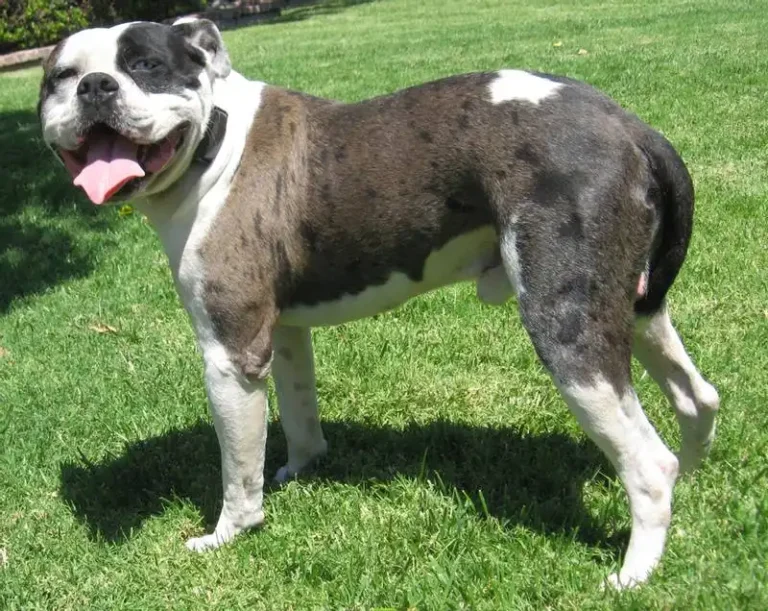
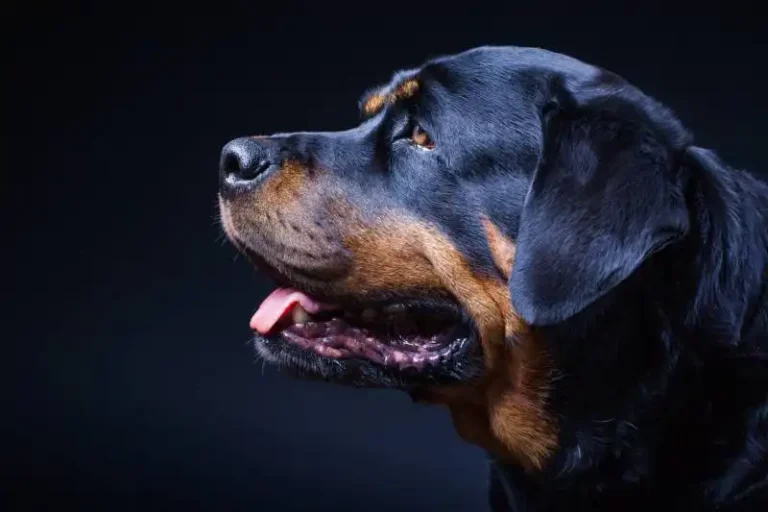
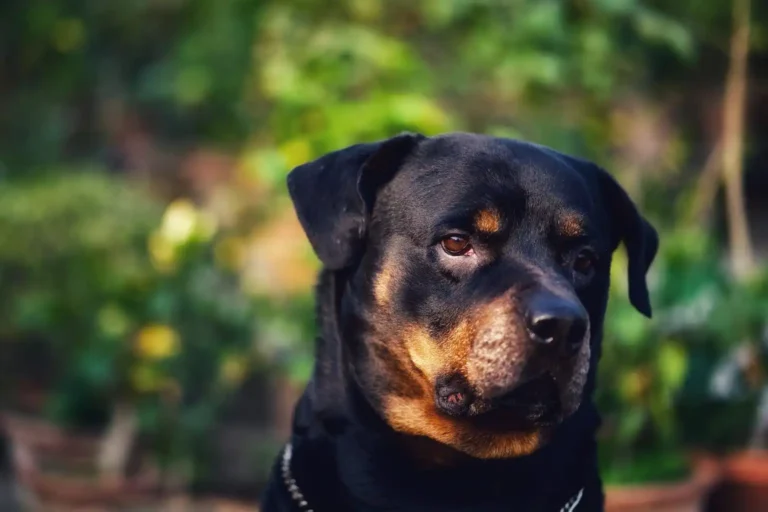
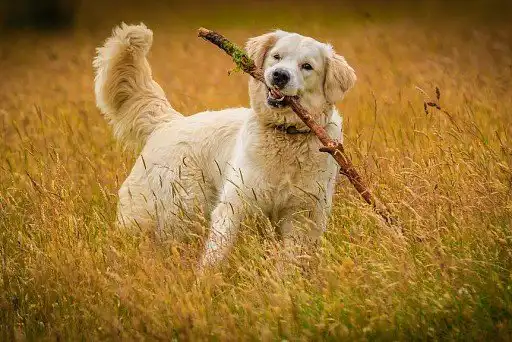

Hi,
register alldogsthings.com to the Google Search Index to have it displayed in search results. Visit now:
https://SearchRegister.org/